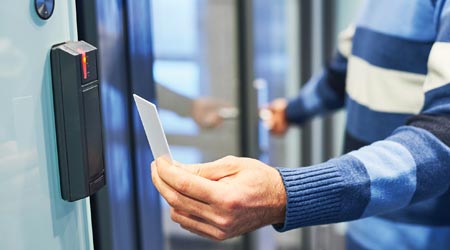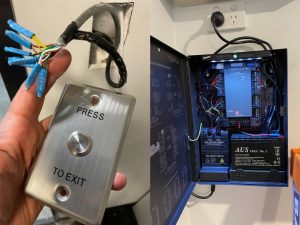The Ultimate Guide to Access Control Systems for Businesses
The Ultimate Guide to Access Control Systems for Businesses
Introduction
In today’s rapidly evolving business landscape, security is of paramount importance. As businesses strive to protect their assets, data, and employees, implementing robust access control systems has become a necessity. This ultimate guide will provide you with a comprehensive understanding of access control systems for businesses, empowering you to make informed decisions and safeguard your organization effectively.
Understanding Business Access Control Systems
What are Access Control Systems?
Access control systems are security mechanisms designed to regulate entry and control access to physical premises. They provide businesses with the ability to manage who enters their facilities, ensuring that only authorized individuals are granted access.

Types of Access Control Systems
There are various types of access control systems available, each with its own unique features and advantages. Common options include keycard systems, biometric systems (such as fingerprint or facial recognition), and keypad systems. Understanding the different types will help you choose the most suitable solution for your business needs.
Benefits of Access Control System Features
Enhanced Security and Theft Prevention
One of the primary benefits of access control systems is their ability to enhance security and prevent unauthorized access. By implementing these systems, you can create barriers that deter potential intruders, reducing the risk of theft, vandalism, and other security incidents.
Improved Operational Efficiency
Access control systems streamline entry processes, eliminating the need for traditional lock and key systems. Automated access management saves time and resources, enabling employees and authorized personnel to move freely within designated areas without compromising security.
Accountability and Audit Trails
Access control systems generate detailed audit trails, providing valuable insights into who accessed certain areas and when. These audit trails enhance accountability and facilitate investigations in the event of security breaches or incidents.
Scalability and Flexibility
Access control systems can scale with your business, accommodating growth and evolving security requirements. Whether you expand your premises or need to modify access permissions, these systems offer the flexibility to adapt to changing needs.
Implementing Access Control Systems
Assessing Business Security Needs
Before diving into the implementation phase, it is crucial to assess your business’s unique security needs. Conduct a thorough evaluation of your premises, taking into account factors such as size, layout, and the nature of your operations. Identify the areas that require restricted access, such as server rooms, executive offices, or storage facilities containing sensitive information or valuable assets.
Additionally, consider the different levels of access required by various individuals or departments within your organization. This assessment will help you determine the appropriate type of access control system and the level of security measures needed to safeguard your business effectively.
Planning and Designing Access Control Systems
Proper planning and design are essential for a successful access control system implementation. Evaluate the layout of your premises, identify critical entry points, and determine the most suitable system components and technologies to meet your security objectives.
Installation and Integration
Once the planning phase is complete, it’s time to install and integrate the access control system. Engage professionals with expertise in system installation to ensure proper configuration, wiring, and integration with existing security infrastructure.
User Training and Access Management
To maximize the benefits of access control systems, it is important to provide comprehensive user training. Educate employees on how to use the system, understand access permissions, and adhere to security protocols. Implement effective access management practices to maintain data integrity and prevent unauthorized access.
Best Practices for Business Access Control Systems

Regular System Maintenance and Updates
Regular maintenance and updates are crucial for the optimal performance of access control systems. Develop a maintenance schedule to inspect hardware, test software functionality, and ensure that the system remains up-to-date with the latest security patches and features.
Access Control Policies and Procedures
Establish clear access control policies that outline the rules and guidelines for system usage. Clearly define roles and responsibilities, access levels, and procedures for granting or revoking access. Regularly review and update these policies to align with changing business needs and security requirements.
Monitoring and Incident Response
Implement a robust monitoring system to track access activities, detect anomalies, and respond promptly to security incidents. Combine access control with video surveillance and alarm systems to enhance overall security measures. Develop an incident response plan to effectively handle potential breaches or emergencies.
Conclusion
Access control systems play a vital role in protecting businesses from security threats and ensuring the safety of employees, assets, and sensitive information. By understanding the types, benefits, implementation process, and best practices associated with access control systems, you are better equipped to make informed decisions that align with your business’s unique security requirements. Embrace the power of access control systems and empower your organization with enhanced security and streamlined operations.
